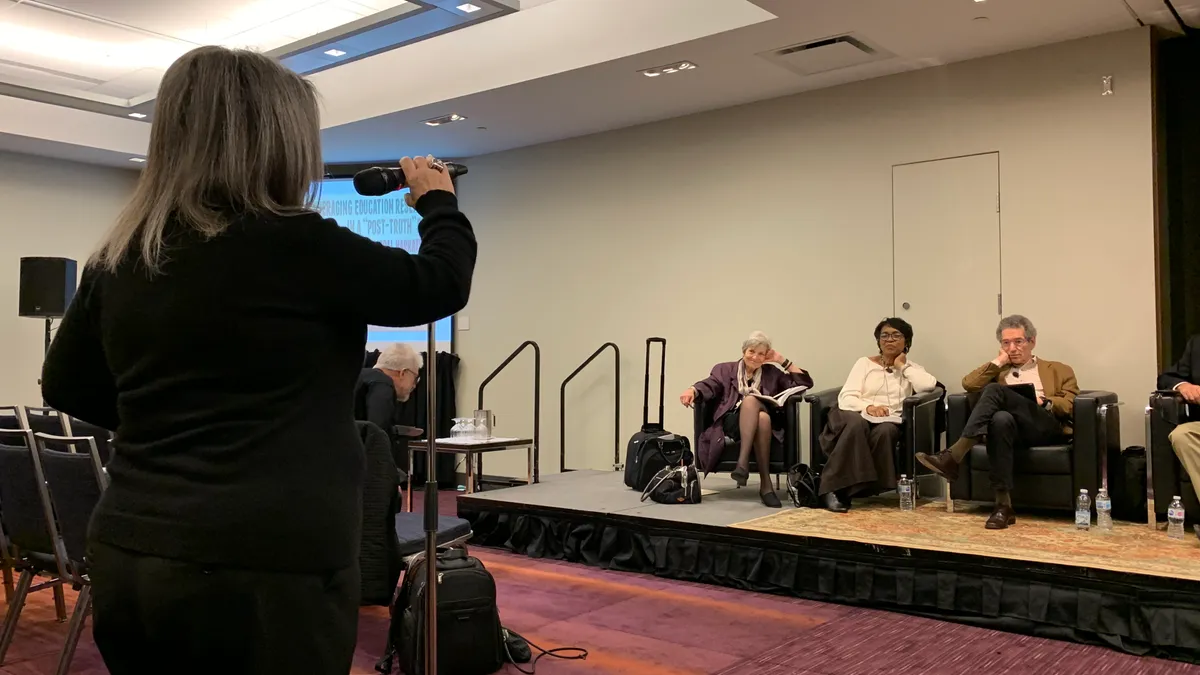TORONTO — Calling for a public health approach to gun violence in schools and communities, leading researchers on the topic gathered in a town hall format Monday at the American Educational Research Association conference to discuss some of the knowledge they think is not getting to educators and the public, as well as to suggest further questions they think should be explored.
“In some ways, we’re being heard, and in other ways we’re not,” said Amanda Nickerson, a bullying prevention expert at the University at Buffalo in New York. For example, only 1% of homicides nationally occur in a school setting, she said, but widespread media attention to school shootings has left parents and educators fearful.
In addition, other data is often overlooked in efforts to make schools safer, said Ron Astor, a social work and education professor at the University of Southern California.
“We don’t talk about the kids who see weapons on campus,” said Astor, who collected and analyzed such survey data for four years from schools in eight San Diego-area districts. “We don’t talk about the climate kids are in.”
He added that while the public may think this is the “worst of times,” there are examples of successful efforts to reduce the presence of weapons at schools. With the San Diego districts, for example, increases in school social workers, intervention programs tailored to schools’ needs and social-emotional learning programs led to reductions in guns and other weapons, as well as gang affiliation at schools. Astor also recently co-authored an American Psychological Association policy brief on reducing weapons in schools.
The speakers shared diverse views on having law enforcement officers at schools. David Osher of the American Institutes for Research said schools are “overmilitarized.” Students, he said, “do not see that officer as somebody who represents their interests. Given what we know about implicit bias, there are great risks.”
But Nickerson, who has worked with the National Association of School Resource Officers, suggested these officers can be valuable members of multidisciplinary teams. Such school crisis or threat assessment teams, however, should also include school leaders and mental health personnel, she said. But she also cited a recent report on the lack of access students have to counselors, nurses, and school social workers and psychologists. She said it’s also important to not lump together school resource officers and security guards under the same category.
In response to a question from an attendee on the role of school resource officers, Astor compared a student’s view of going to school to an adult shopping for a home. Most people, he said, would prefer to not buy a house in a neighborhood with a police officer on every corner, but would rather be in communities where “relationships are strong and not temporary.” He added, however, that if the data shows a higher prevalence of weapons or gang activity at a particular school, he could see a reason to have an officer at that site.
The speakers also said it’s important to learn from other countries, where there is less gun violence and to look at the role of school leaders at schools where weapons are not a problem. And they warned against jumping to conclusions about the mental health of school shooters.
Finally, they made suggestions for future research questions, such as what types of policies regarding access to guns would make a difference and what are the barriers to implementing “what we already know works,” Nickerson said.
Osher added that it’s important to “engage young people to understand their experience in school and what are the things that make them feel safe and not feel safe.”














